- Home
- Neal Stephenson
Anathem Page 33
Anathem Read online
Page 33
“Besides,” Lio went on, “this ship was only for military operations inside the solar system. They had ideas for ones that could go to relativistic velocity, but they would have been much bigger and they’d have looked different.”
“You wouldn’t need a nose cone!” said Barb—which was his idea of hilarious.
“So if we buy the idea that what Ala and I saw—the blue sparker—was a ship in orbit that was using this kind of propulsion system—” I began, nodding at the diagram.
“—Then it must have come from an alien civilization,” Arsibalt said.
“Fraa Jesry believes that advanced life forms must be extremely rare in the universe,” Barb told us.
“He followed the Conjecture of Saunt Mandarast,” Arsibalt said, nodding agreement. “Billions of planets infested with unicellular glop. Almost none with multicellular organisms—to say nothing of civilizations.”
“Let’s speak of him in the present tense—it’s not as though he’s dead!” Tulia pointed out.
“I stand corrected,” said Arsibalt, none too wholeheartedly.
“Barb, when you were talking to Jesry of this, did he have some alternate theory?” Tulia asked.
“Yes—an alternate theory about an alternate universe!” Barb cracked. Tulia mussed his hair and gave him a shove, which was a mistake because then he wanted to get rambunctious. We had to threaten him with Anathem and make him go outside and run five laps around Shuf’s Dowment before he would settle down.
“Talking about where this thing might have come from is a side track to the main discussion,” Lio pointed out.
“Agreed,” said Arsibalt, so authoritatively that we did agree.
“It came from somewhere. Who cares. It settled into a polar orbit around Arbre and stayed there for a while—doing what?” I said.
“Reconaissance,” said Lio. “That’s what polar orbits are for.”
“So they were learning about us. Mapping Arbre. Eavesdropping on our communications.”
“Learning our language,” Tulia said.
I went on, “Somehow Orolo became aware of it. Maybe he happened to see the deceleration burn that took it into polar orbit. Perhaps others did too. The Panjandrums knew. They sent word to the hierarchs: ‘we are putting you on notice that we deem this to be a Saecular matter, it is none of your business, so butt out.’ And the hierarchs dutifully sent out the order to close every starhenge.”
“Inquisitors were sent to make sure it was done,” Lio said.
“Fraa Paphlagon was Evoked to go somewhere and study this thing,” Tulia said.
“He,” said Arsibalt, “and perhaps others like him from other concents.”
“The ship stayed in orbit. Maybe sometimes it would adjust its trajectory by firing those engines. But it would only do so when it was passing between Arbre and the sun—to hide its traces.”
“Like a fugitive who walks in a river not to leave footprints,” Barb put in.
“But yesterday something changed. Something big must have happened.”
“Gardan’s Steelyard says that the course change you and Ala witnessed, and the unprecedented six-fold Voco less than a day later, must be connected,” Arsibalt said.
I had been avoiding the sacred relic. That had to end. Ala had given it to me for a reason. We unrolled it on the table and weighed its corners down with books.
“We can’t figure out what it did unless we know the darn geometry!” Barb complained.
“You mean, of the pinhole, and where the screen was situated up in the Praesidium. Which way was up. Which way was north,” I said. “I agree that we have to take all of those measurements.”
Barb started backing toward the exit—ready to take those measurements at once.
But I held back. I wanted to do those things as badly as he did. But here was where Orolo would have proposed something brilliantly simple. Something that would have made me feel like an idiot for having made it too complicated. I could think of nothing like that.
“Why don’t we at least measure the angle,” I said. “It comes in from one direction. That’s its initial orbit. By firing those bombs, it curves until it is going a different direction. That’s its final orbit. We could at least measure that angle.”
So we did. The answer was something like a quarter of pi—forty-five degrees.
“So if we assume it started out in a polar orbit, then by the time this maneuver was finished, it was in a new orbit, roughly halfway between polar and equatorial,” Lio said.
“And what do you suppose would be the point of that?” I asked, since Lio knew so much more of exoatmospheric weapons systems than anyone else in the room.
“If you plot its ground track on a globe or a map of the world, well, it’s never going to ascend higher than forty-five degrees of latitude, in such an orbit. It’ll sine-wave back and forth between forty-five degrees north and forty-five south.”
“Which is where ninety-nine percent of the people live,” Tulia pointed out.
“Which they would know by now, since they have had time to compile maps of every square inch of Arbre,” Arsibalt reminded us.
“They have finished Phase One: reconaissance,” Lio concluded, “and yesterday began Phase Two: which is—who knows?”
“Actually doing something,” Barb said.
“And the Panjandrums know it,” I said. “Have been worrying about it. They’ve had a contingency plan ready for months—we know this because Orolo’s name was on that list! So it must have been written out and sealed before his Anathem.”
“I’ll bet Varax and Onali handed it to Statho during Apert,” Tulia said. “Statho’s been carrying it around ever since, awaiting the signal to break the seal and read out those names.” She got a distracted look on her face. “It bothers me that they chose Ala.”
“I never fully understood until last week how close the two of you were,” I said.
But Tulia wanted none of it. “It’s not just that,” she said. “I mean, it is. I love her. I can’t stand that she’s gone. But why her? Paphlagon—Orolo—Jesry—fine. I get it. But why would you choose Ala? What would you want someone like her for?”
“To organize a lot of other people,” Arsibalt said without hesitation.
“That,” said Tulia, “is what troubles me.”
For God’s sake, raise your sights.
Mention of the Inquisitors had put me in mind of the conversation I’d had with Varax on Tenth Night. This had slipped my mind because of what had happened a few moments afterward. But I could remember him gazing up at the starhenge—or perhaps he’d been raising his sights a little higher, looking off into space. Come to think of it, he’d been facing north at the time. Larger matters are at stake than whether a young fraa at the remote hermitage of Saunt Edhar practices his vlor on some local runagates…think bigger…the way your friend does when he decides to tackle four larger men.
What on earth did that mean? That the alien ship was a threat? That we would soon have to tackle it against long odds? Or was I reading too much into it? And why, during my earlier conversation with Varax, had he grilled me concerning my opinions on the Hylaean Theoric World? It was an odd time for someone like him to be so concerned with metatheorics.
Or maybe I was reading way too much into these conversations. Maybe Varax was just one of those guys who thought out loud.
The “raise your sights” part of it seemed pretty clear.
I didn’t need a lot of encouragement to get to work. After Orolo’s Anathem, the only thing that had kept me from going crazy had been working on the photomnemonic tablet. Ala’s loss wasn’t quite as dreadful—at least she hadn’t been Thrown Back—but unlike Orolo’s it had been entirely surprising to me. I was still feeling bad that I’d just stood there like a stunned animal while she’d walked out of my life. To have lost her, just after we’d begun something—well, suffice it to say that I really needed a project to work on.
Our group invaded the shack above the belfry with e
very measuring device we could scare up. Arsibalt found some architectural drawings of the Mynster dating back to the Fourth Century. We calculated the geometry of the camera obscura in three different ways, and compared the results until we got them all to agree. We were able to refine the rough measurement we had made at Shuf’s Dowment: the ship’s new orbit was inclined at about fifty-one degrees to the equator, which meant that it passed over essentially all populated areas. When the weather had become hot and dry in the centuries after the Terrible Events, people had tended to move poleward. More recently, reductions in the amount of carbon dioxide in the atmosphere had begun to gentle the climate, and people had migrated back towards the equator to get away from the solar radiation near the poles. As a matter of fact, fifty-one degrees was a higher orbit than the ship really needed, if all it wanted was to keep an eye on most of the world’s population.
We thought this mysterious until Arsibalt pointed out that if you looked at all the world’s major concents—meaning ones that had Millennium Clocks and that housed hundreds or thousands of avout—the one that was farthest from the equator was at 51.3 degrees north latitude.
That one happened to be the “remote hermitage” of Saunt Edhar.
Word got around. Within a month of the big Voco, everyone in the Decenarian math knew most of what we knew about the ship. The hierarchs could do nothing to suppress it. But still they didn’t open the starhenge. I found myself getting invited to a lot more late-night chalk hall sessions. We studied the diagram Lio had found in that book and worked out the theorics of how such a ship would function, and how much bigger it would have to be to journey between stars. Some of it was simple praxic calculations about the shock absorbers. Some—such as predicting what the plasma would do when it hit the plate—was extraordinarily challenging work. The theorics was too advanced for me. It felt like we were proving the Lorites wrong, because some of the other avout, just a little older than I, were coming up with proofs that we were pretty sure had never been thought of by anyone before—anyone on Arbre, that is.
“It makes you wonder about the Hylaean Theoric World,” Arsibalt volunteered, one summer evening, about eight weeks after the big Voco. He had been pretending to look after his bees and I had been pretending to tend the weeds. By that time, the Sarthian cavalry had penetrated deep into the Plains of Thrania and driven a wedge between the Fourth and the Thirty-third Legions of General Oxas. So it wasn’t surprising that Arsibalt and I bumped into each other. At our latitude, days were very long at this time of year, and we still had some light remaining even though supper had ended hours ago.
“What’s on your mind?” I asked him.
“You are toiling in chalk halls with the other Edharians, trying to work out the theorics of this alien ship,” he said, “theorics that the aliens must have mastered long ago, to build such a thing and drive it among stars. My question is: are they the same theorics?”
“You mean, ours and the aliens’?”
“Yes. I see the chalk-dust on your bolt, Fraa Erasmas, from equations you were drawing after supper. Did some two-headed, eight-limbed alien draw the same equations on the equivalent of a slate on another planet a thousand years ago?”
“I’m pretty sure the aliens use different notation,” I began.
“Obviously!” he barked.
“You sound like Ala.”
“Maybe they use a little square to represent multiplication and a circle for division, or something,” he went on, rolling his eyes in annoyance, then whirling his hand to indicate he wanted the conversation to go faster.
“Or maybe they don’t write out equations at all,” I said. “Maybe they prove things with music, or something.” Which wasn’t farfetched at all, since we did something like that in our chants, and there had been whole orders of avout who had done all of their theorics that way.
“Now we’re getting somewhere!” He was so thrilled by this idea that I regretted having mentioned it. “Suppose they have a system of doing theorics that uses music, as you said. And perhaps if it leads to a harmonious chord, or a pleasing tune, it means that they have proved that something is true.”
“You really are going off the deep end now, Arsibalt.”
“Tolerate your friend and fraa. Do you think it’s the case that, for every proof you and the other Edharians work out on a slate, the aliens have a proof in their own system that corresponds to it? That says the same thing—expresses the same truth?”
“We couldn’t do theorics at all if we didn’t think that was the case. But Arsibalt, this is old stuff we’re talking about. Cnoüs saw it. Hylaea understood it. Protas formalized it. Paphlagon thought about it—which is why he got Evoked. What’s the point of going over it now? I’m tired. As soon as it gets a little darker, I’m going to bed.”
“How are we to communicate with the aliens?”
“I don’t know. It’s been speculated that they have been learning our language,” I reminded him.
“What if they can’t talk?”
“A minute ago you had them singing!”
“Don’t be tedious, Fraa Erasmas. You know what I’m getting at.”
“Maybe I do. But it’s late. I was up until three talking about plasma. Hey, I think it is dark enough for me to go to bed now.”
“Hear me out. I’m saying that it is through the Protan forms—the theoric truths—in the Hylaean Theoric World that we might end up communicating with them.”
“It sounds like you’re just itching for an excuse to barricade yourself in Shuf’s Dowment behind a stack of old books and work on this. Are you asking me for—permission? Approval?”
He shrugged. “You are the resident expert on the alien ship.”
“Okay. Fine. Knock yourself out. I’ll back you up. I’ll tell everyone you’re not crazy—”
“Capital!”
“—if you help me with one thing that really has me scratching my head right now.”
“And what would that be, Fraa Erasmas?”
“Why does the Millenarian math appear to be glowing?”
“What?”
“Look at it,” I said.
He turned around and raised his chin to gaze up at the crag. It was glowing ruby red. This was not a normal thing for it to be doing.
Of course, we saw soft lights up there all the time. And if the weather was right, the walls would sometimes catch the light of the setting sun, as when Orolo and I had looked on it during Apert. For the last few minutes, as the twilight had been deepening, I’d noticed a red glow about the place, and reckoned it must be that again. But the sun was absolutely down now. And this light was a shade of red that was most un-sun-like. It had a grainy, sparkly quality.
And it was coming from the wrong direction. Sunlight would have lit up the west-facing surfaces of the math and the crag. But this weird red light was striking the roofs, parapets, and tower-tops. Everything below was in shade. It was almost as if some aerocraft were hovering high above the crag shining a light straight down. But if that were the case, it was so high we could neither see nor hear it.
The meadow grew busy with fraas and suurs who came out of the Cloister buildings to look at it. Most were silent—like Deolaters gazing upon a heavenly omen. But among a group of theoricians not far away an argument was gaining momentum, featuring words such as laser, color, and wavelength. That jogged my memory: I knew where I’d seen that grainy sort of light before: the guidestar lasers on the M & M.
And that was the key to the riddle. A laser beam could shine across a vast distance without spreading out very much. The thing that was shining this light on the Millenarian math didn’t have to be nearby. It could be thousands of miles away. It could be—could only be—the alien spaceship.
Exclamations, and even a little bit of applause, rose up from the meadow. Looking more closely at the Millenarian math I saw that a column of smoke was rising from behind its walls. I swallowed hard and got very upset for just a moment, thinking that the laser was setting fire to
the place! It was a death ray! Then my better sense got the upper hand. To burn things down, one would want an infrared laser, whose light would make things hot. By definition, this laser wasn’t infrared, because we could see it. The smoke wasn’t from burning buildings. The Thousanders were creating it. They were throwing grass or something onto fires, filling the space above their math with smoke and steam.
It was impossible to see a laser beam from the side if it was traversing empty space or clean air, but if you put smoke or dust in its way, the particles would scatter some of the light in all directions and make the ray stand out as a glittering line in space.
It worked. That ray might be thousands of miles long. We’d never be able to see most of it—the part that traversed the vacuum above the atmosphere. But the smoke made by the Thousanders enabled us to see the last few hundred feet, and to get a very good idea of which direction the light was coming from.
And of course I had an unfair advantage, since I knew the plane of the alien ship’s orbit—which of the fixed stars it would pass in front of. I held my bolt up with one hand, making a screen to block out most of the light from the crag. My eyes adjusted to the dark, to the point where I could see the stars again.
And then I saw it arcing across the sky, just where I knew it’d be: a point of red light surrounded by a grainy nimbus caused by its passage through the atmosphere. I pointed. Others around me saw this and found it for themselves. The meadow became as silent as the Mynster during an Anathem.
The shooting star winked out and vanished into the black. The red glow was gone. A round of applause started up in the meadow, but it was tentative. Nervous. It died away before it really got going.
“I feel like a fool,” Arsibalt said. He turned and looked at me. “When I think of all the things I’ve worried about and been afraid of in my life—and now it’s plain that I’ve been scared of the wrong things.”
They rang Voco at three o’clock in the morning.
No one minded the odd hour. No one was sleeping anyway. People showed up slow and late because most of them were carrying books and other things they thought they might need, supposing their names were called.

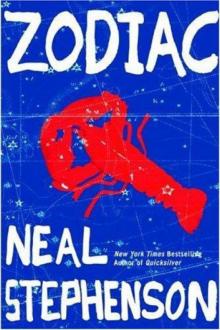 Zodiac: The Eco-Thriller
Zodiac: The Eco-Thriller The Mongoliad: Book One
The Mongoliad: Book One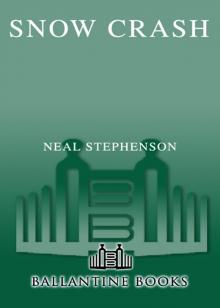 Snow Crash
Snow Crash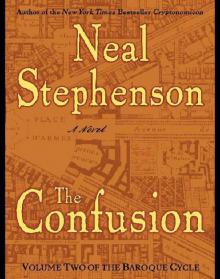 The Confusion: Volume Two of the Baroque Cycle
The Confusion: Volume Two of the Baroque Cycle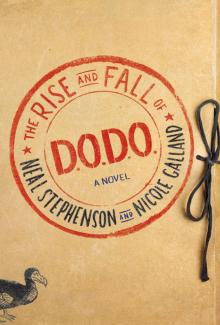 The Rise and Fall of D.O.D.O.
The Rise and Fall of D.O.D.O. The Diamond Age: Or, a Young Lady's Illustrated Primer
The Diamond Age: Or, a Young Lady's Illustrated Primer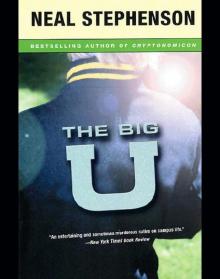 The Big U
The Big U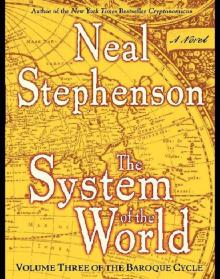 The System of the World: Volume Three of the Baroque Cycle
The System of the World: Volume Three of the Baroque Cycle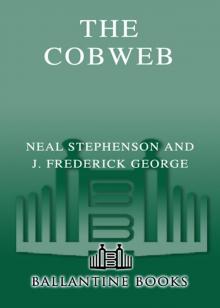 The Cobweb
The Cobweb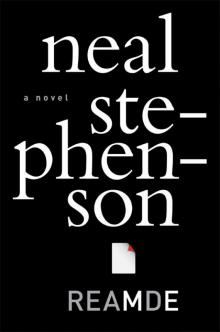 Reamde
Reamde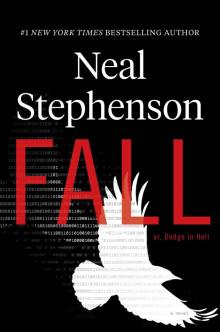 Fall; or, Dodge in Hell
Fall; or, Dodge in Hell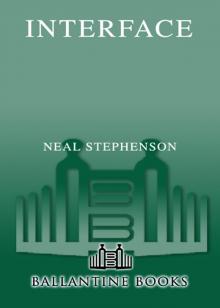 Interface
Interface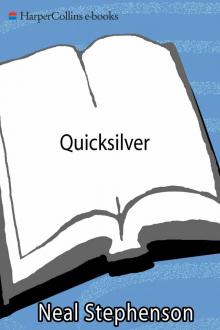 Quicksilver
Quicksilver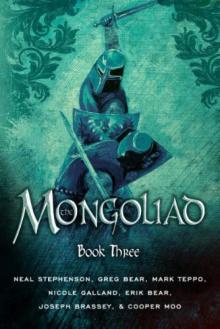 The Mongoliad: Book Three
The Mongoliad: Book Three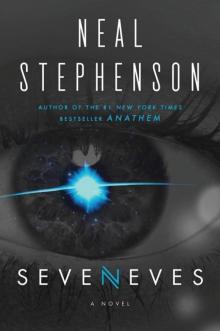 Seveneves
Seveneves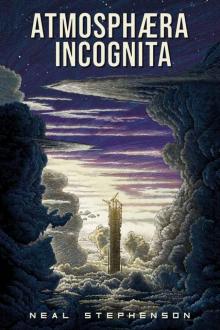 Atmosphæra Incognita
Atmosphæra Incognita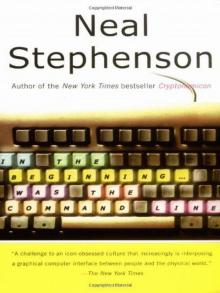 In the Beginning...Was the Command Line
In the Beginning...Was the Command Line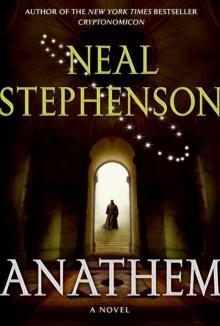 Anathem
Anathem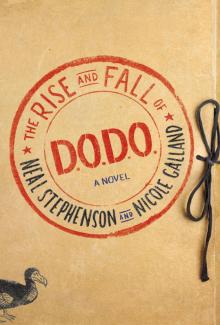 The Rise and Fall of D.O.D.O.: A Novel
The Rise and Fall of D.O.D.O.: A Novel The Mongoliad: Book Two
The Mongoliad: Book Two Diamond Age or a Young Lady's Illustrated Primer
Diamond Age or a Young Lady's Illustrated Primer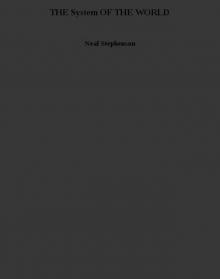 THE System OF THE WORLD
THE System OF THE WORLD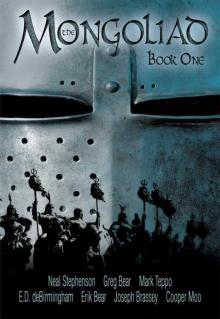 The Mongoliad: Book One tfs-1
The Mongoliad: Book One tfs-1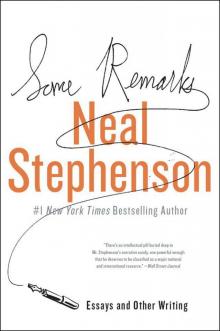 Some Remarks: Essays and Other Writing
Some Remarks: Essays and Other Writing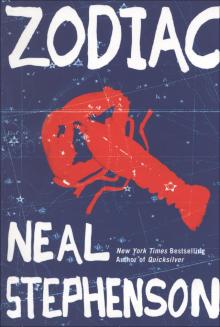 Zodiac
Zodiac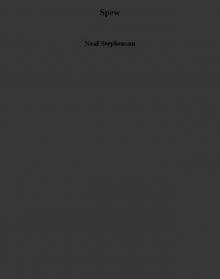 Spew
Spew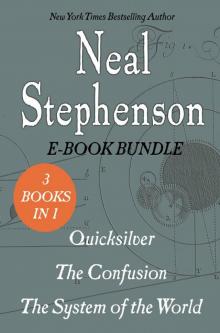 The Baroque Cycle: Quicksilver, the Confusion, and the System of the World
The Baroque Cycle: Quicksilver, the Confusion, and the System of the World The Diamond Age
The Diamond Age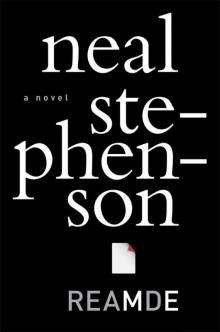 Reamde: A Novel
Reamde: A Novel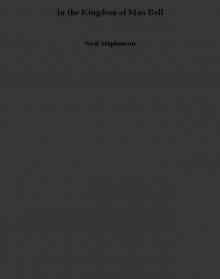 In the Kingdom of Mao Bell
In the Kingdom of Mao Bell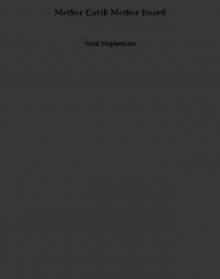 Mother Earth Mother Board
Mother Earth Mother Board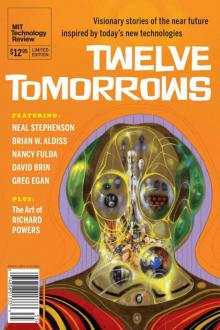 Twelve Tomorrows - Visionary stories of the near future inspired by today's technologies
Twelve Tomorrows - Visionary stories of the near future inspired by today's technologies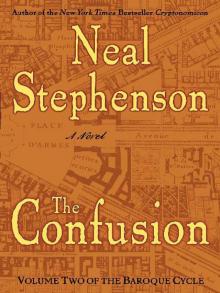 The Confusion
The Confusion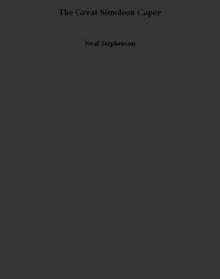 The Great Simoleon Caper
The Great Simoleon Caper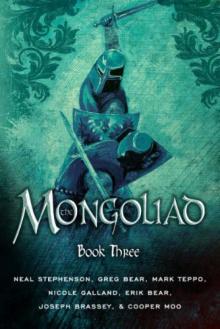 The Mongoliad: Book Three tfs-3
The Mongoliad: Book Three tfs-3